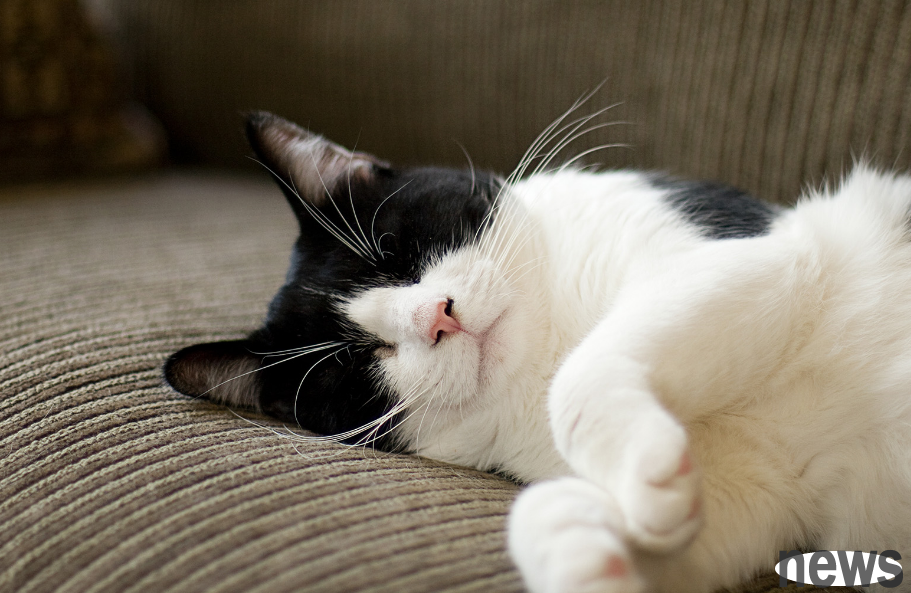If the owner of a cat's ear does not pay attention to cleaning, it is a place that is prone to breeding bacteria, infection and inflammation. Normal and healthy cats have small and exquisite ears and smell a fragrance. On the contrary, when the...
If the owner of a cat's ear does not pay attention to cleaning, it is a place that is prone to breeding bacteria, infection and inflammation. Normal and healthy cats have small and exquisite ears and smell a fragrance. On the contrary, when the inflamed ears approach the ears, they will smell an unpleasant smell. This may be the cause of the accumulation of earwax, or it may be caused by ear diseases such as otitis externa.
1. Otitis externa.
This disease is caused by parasites such as bacteria, fungi or ear ticks. Injuries caused by water in the ear or random ear cleaning may also cause this disease. In the early stage of the diseased cat's ear itchy, the cat will keep shaking its head and scratching its ears. Soon, slightly black earwax will appear and there will be a odor. The tympanic membrane ruptures, blisters and pustules appear, and they develop into otitis media in one step. At this time, the ears no longer itch, but will hurt violently, so the cat hates touching its ears.
Be careful not to put water into the cat's ears when taking a bath until otitis externa is cured. Since cats do not allow them to touch their ears, anesthesia must be performed first to make a more correct diagnosis.

2. Otitis media
Otitis media and endotitis in cats are inflammations of the ear tympanum, which often occur simultaneously or successively. The middle ear is inflamed by worsening otitis externa or blood infection of bacteria; if the inner otitis is caused, it will affect its hearing and balance, causing abnormal movements in the cat, and its head is tilted to the infected side. You must seek medical treatment as soon as possible, otherwise it will cause permanent hearing damage. Most of them are severe external ear├Webmaster recommends: How to lure the cat out if it is lost? The inflammation spreads or the tympanic membrane infection is slightly perforated. Pathogens (such as Staphylococcus, Streptococcus, Pseudomonas, etc.) spread to the tympanic membrane through the external auditory canal and Eustachian tube, while pathogens are infected through blood channels.
Otitis media in cats is mostly caused by otitis externa, mainly bacteria, ear mites and fungal infections. Bath water enters the ears as a common cause, and can also be infected by blood. Generally, middle ear and endotitis occur at the same time.
Treatment: ① Anesthesia; ② Rinse the affected ear with medication, rinse repeatedly until the aspirated liquid is clear; ③ Apply antibiotics throughout the body; ④ Drop anti-inflammatory ear fluid into the ear; ⑤ Infusion to supplement nutrition and electrolytes. For cases where the tympanum is not ruptured but the tympanium is swollen and congested, tympanotomy is used, which can facilitate cleaning, reduce pressure, and relieve pain. Eliminate inflammation and prevent permanent auditory defects. Clinical otitis media or ruptured tympanic membrane has a lower cure rate.
3. Microscopic mites caused by tinea vegetative
Scabies. There are several types of mites that cause scabies. The most common type of inflammation in cats' external auditory canal. Scabies, scabies mites parasitize cats. Start forming tiny, hard round bulges on the skin. These bumps develop scaling, scabs, and inflammation usually occur on the upper edge of the ear and other body parts. Severe itching. Ear mites are through direct contact with infected animals.
Cats suffering from ear mites cause intense retraction, constantly scratching around their ears, head and neck. Symptoms include head shaking, redness, hair loss, scabs, gray-yellow scabs.

4. How to clean your ears?
Pet cats have their own ways to clean their ears, but when the cat's ears are covered with black scabies, the breeder should help to clean up the dirt in the cat's ears. Before cleaning the cat's ears, you must first relax the cat's emotions, let the cat listen to you obediently and stay quietly in a place at your mercy. At the same time, the feeder soaks the cotton swab in the baby makeup oil and then cleans up the dirt in the ears within visible range. After the cat takes a shower, you can clean the cat's ears. Dry the remaining water stains in the cat's ears, and then clean the cat's ears by immersing it in the baby's makeup oil with a cotton swab.
Precautions for cleaning cat ears:
1. First, use one hand to spread your five fingers and pinch the cat's aerials into a fan shape, and then clean it up cleanly.
2. When a cleaned cat has a bad temper, you can cover the cat's head with a towel to block the cat's view and prevent the cat from having excessive behaviors, which makes it easier for the breeder to clean the cat's ears.